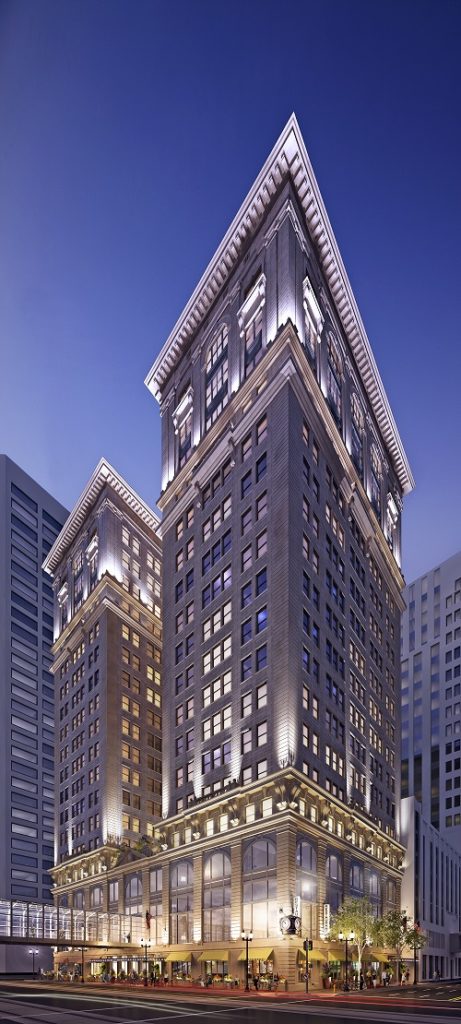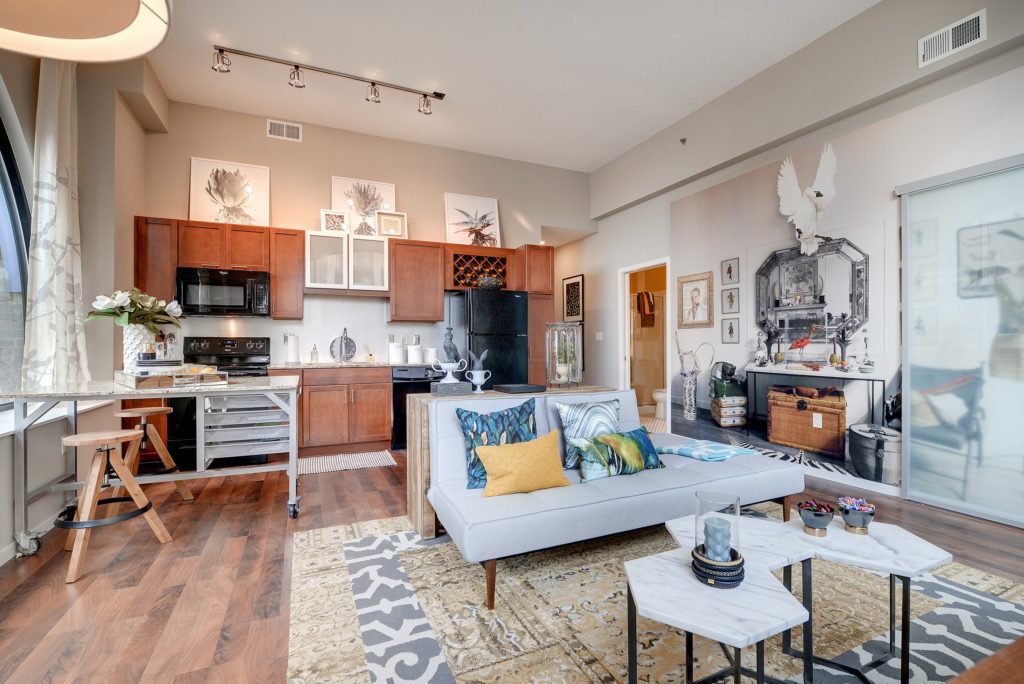The Soo Line Building City Apartments is just one of many green multifamily projects that has successfully implemented green building elements cost-effectively. The Soo Line Building, designed by BKV Group and Wiss-Janney-Elstner and owned and redeveloped by Village Green, is located in Minneapolis, Minnesota. It was originally built in 1915 to house the corporate offices of the First National Bank and the Minneapolis-St. Paul-Sault Ste. Marie Railway, or Soo Line. Since its inception, the building has undergone multiple transformations, losing many of its original features to suit the changing needs of the occupants. Upon its rebirth as a green multifamily project, the architects have worked to restore the building’s historical fabric while weaving in modern features and luxuries.

As an adaptive reuse project that transformed offices into apartments, Soo Line is inherently green. However, the project team did not stop at structural reuse. Historic but toxic materials, such as lead paint and asbestos, were removed to improve occupants’ health. Many of the original features have been restored, including marble flooring, stairs, and terra cotta and granite cladding, reducing environmental impacts caused by the extraction, manufacturing, and shipping associated with new materials. Windows were either refurbished or replaced to improve efficiency while maintaining historic character. Some of the project’s green features were even relatively easy to include. For example, Soo Line uses Low VOC paints and carpeting as well as eco-friendly sealants and hardwood flooring.
Just one block from light rail and major transit bus stations, the development takes advantage of and encourages the use of public transit. Soo Line also boasts easy access to the Minneapolis Skyway, the largest continuous elevated pedestrian walkway in the world stretching over seven miles and linking sixty-nine blocks.

Other features were more difficult to incorporate but were essential to meeting the project’s green goals—new energy-efficient mechanical and lighting systems, for example, which required seamless integration into the existing structure.
Perhaps less obvious to the untrained eye is a list of additional green features that helps the project to reach its goals of being an energy-efficient green building:
- High-performance windows that achieve a U-value of 0.35
- High-efficiency (96 percent and up) domestic hot water boilers
- Heat plate exchangers on the chillers that produce essentially free cooling
- Energy recovery units
- High R-value spray insulation in the exterior walls
- Prefinished materials that help to reduce the amount of site-applied finishes
- Energy Star appliances
- Low-flow fixtures
- Motion detection lighting
Although most of these features are green by design, other features of the building rely on Soo Line’s occupants to ensure proper use and green habits. For example, residents who utilize public transportation instead of driving to work decrease environmental impact, and residents who are already conscientious of their water and electricity usage will drive down the building’s overall usage. That said, without green features incorporated from the start of the design, the greenness of a building will be significantly reduced despite occupants’ best efforts. Jason Koehn, Chief Investment Officer for Village Green, says that the greenness of a building is “similar to a computer in how the quality of the hardware determines the usability and versatility of the software’s features.”Does incorporating green features make units more attractive to buyers? Absolutely.

Showing and educating potential buyers and renters about the value of green features and the impact they can have on a buyer’s or renter’s utility bills is key. For Soo Line, this means advertising the cost savings associated with each unit’s Energy Star appliances, energy-efficient windows and LED lighting, which all provide short- and long-term value to the client. In addition, potential residents are educated on how Soo Line encourages an overall sustainable lifestyle and healthy environment with its walkability, on-site recycling, and more. Buildings like Soo Line showcase the success and affordability of green multifamily projects and offer lessons for builders, architects, and others in the industry. First, as green becomes more popular and less cost prohibitive, industry professionals should stay abreast of developments in green. Second, though some still view cost as an obstacle to green building, designers and builders should emphasize to clients the synergy of energy performance and affordability. Lastly, marketing efforts of green building should focus on the overall sustainability and cost effectiveness of the building rather than specific performance features.

